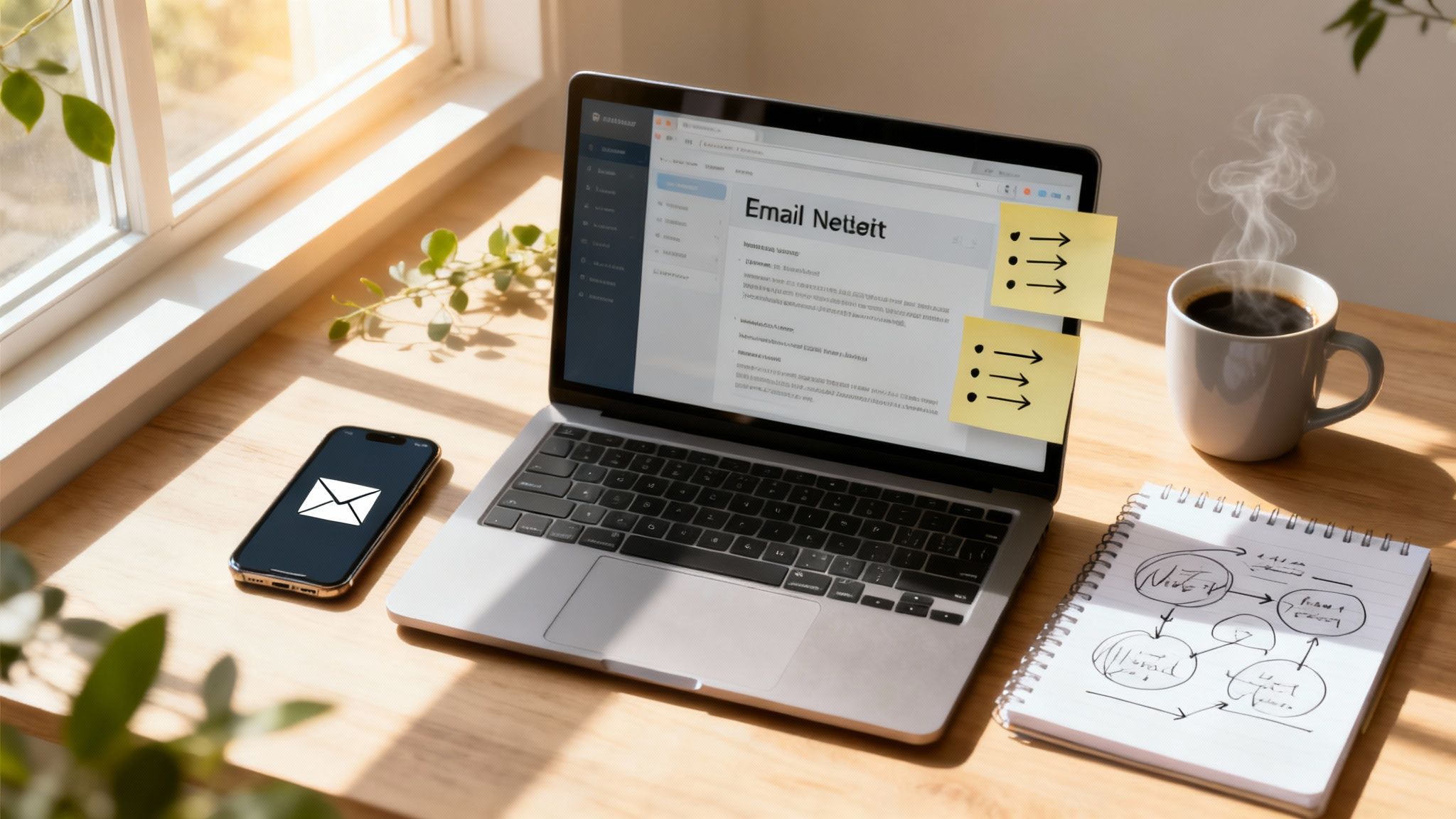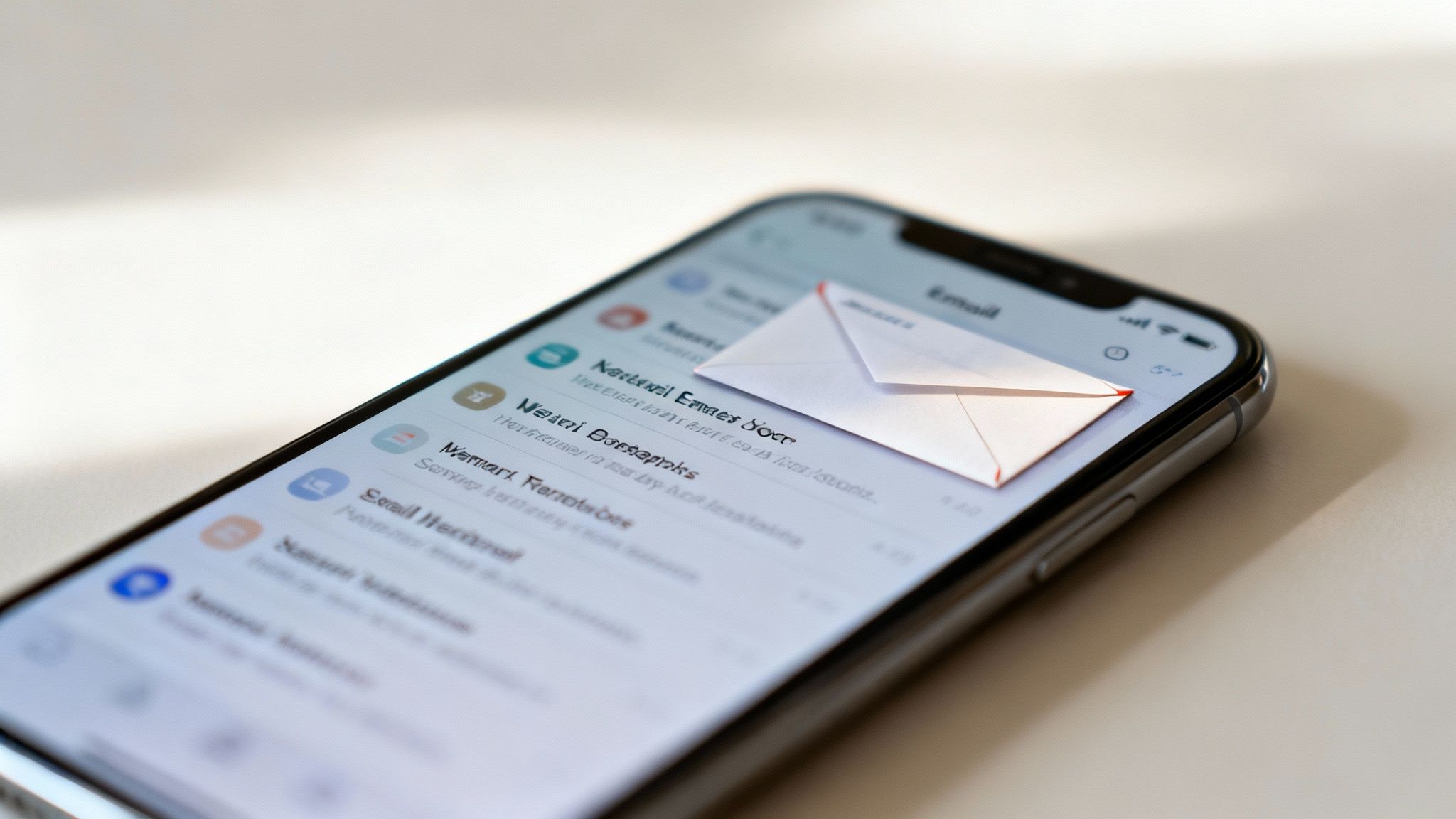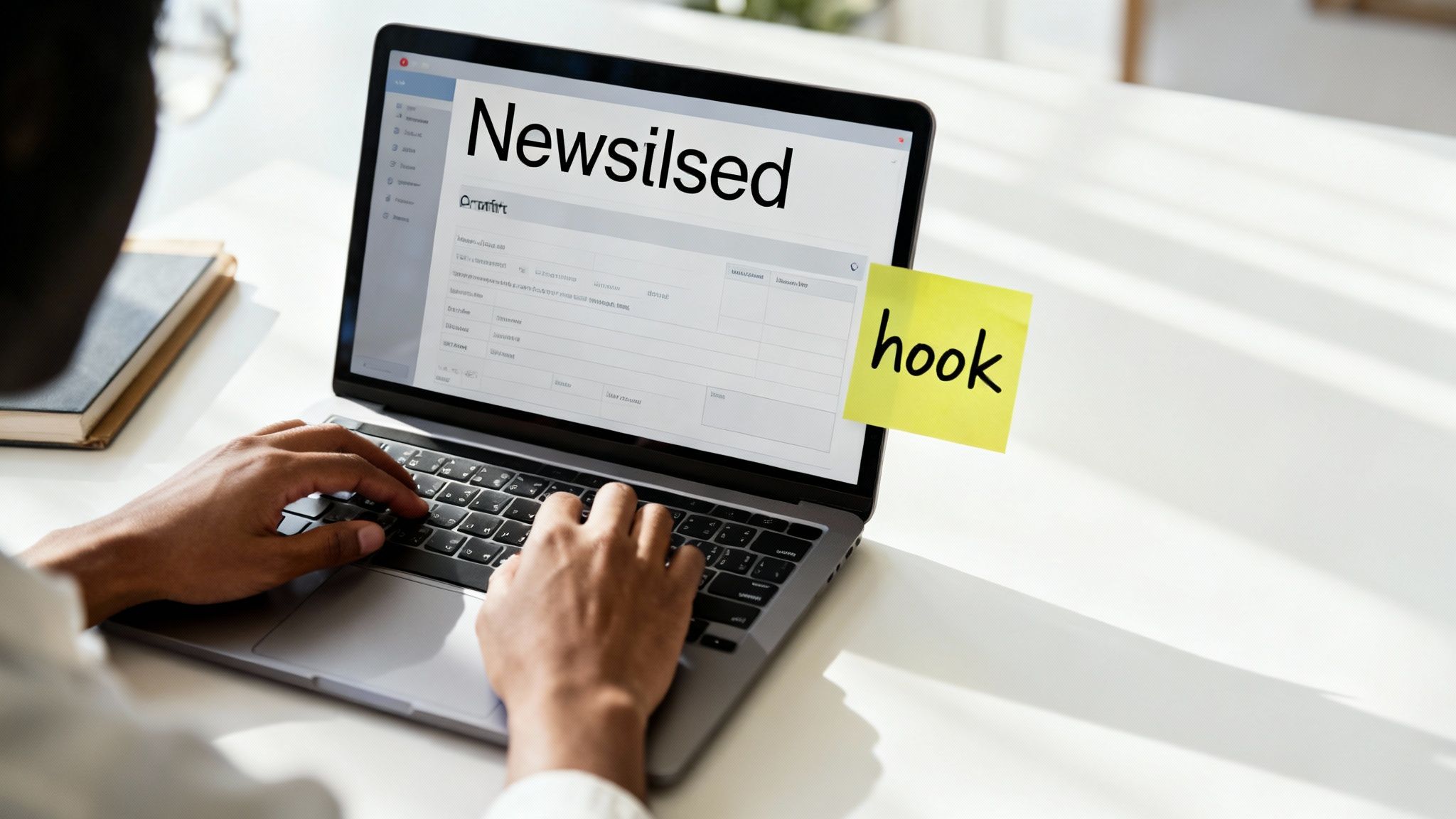
Let’s be honest, writing a newsletter that people actually want to read is tough. You're trying to build a connection, share something valuable, and stand out in an inbox that’s already overflowing. This isn't just about sending another email; it's about crafting content so good that your audience genuinely looks forward to it. This guide on how to write newsletters breaks down the practical, no-fluff strategies to turn your emails into must-read content, helping you build a loyal community that hangs on your every word.

Why Most Newsletters Fail (and How to Fix It)
Ever get that sinking feeling your newsletter just vanished into the digital void? You're not alone. Many marketers and creators pour hours into their emails, only to be met with silence. The common pain point isn't a lack of effort—it's that they're sending generic messages instead of building genuine relationships. A successful newsletter feels like a personal conversation, not a broadcast. To truly connect, you need to understand your audience's needs and deliver value consistently.
Step 1: Define Your Newsletter's Core Purpose
Before you write a single word, you need to get crystal clear on your "why." A newsletter without a purpose is just noise. Start by defining one primary goal. Are you trying to drive sales, establish yourself as an industry authority, or build a loyal community? For example, a marketing agency’s newsletter might aim to share expert tips to attract new clients, while a solo creator might focus on building a community around a shared interest. Once you know your goal, focus on your reader. Figuring out how to identify your target audience on a deeper level—understanding their challenges and passions—ensures every email is intentional and effective.

Step 2: Craft Content That Earns Attention
With a clear purpose, it's time to create content that gets read. Your subject line is your first and only shot to stand out in a crowded inbox. It needs to spark curiosity without resorting to clickbait. A great subject line promises value, like "3 AI secrets for viral content" from a marketing tech company. Once they're in, a powerful hook in the first sentence is crucial to keep them reading. Weave in a short, relatable story or anecdote to make your message stick. People remember stories far more than dry facts. If you want to sharpen your writing skills, our guide on copywriting tips for beginners is a great place to start.
The Anatomy of a Great Newsletter
Every effective newsletter follows a proven structure. Mastering these components provides a reliable framework for guiding your reader from the subject line to your call to action.
| Component | Purpose | Best Practice Example |
|---|---|---|
| Subject Line | To entice the reader to open the email. It's your first impression. | "5 mistakes you're making with your morning coffee ☕" |
| Preheader Text | A short summary that appears after the subject line in the inbox. | "And how to fix them for a better brew..." |
| Compelling Hook | The first 1-2 sentences that grab the reader's attention immediately. | "Ever wonder why your homemade latte never tastes quite right?" |
| Main Body Content | The core message of your newsletter, broken into scannable sections. | Use short paragraphs, bullet points, and bold text to highlight key info. |
| Call to Action (CTA) | The specific action you want the reader to take next. | A clear, clickable button like "Read the Full Guide" or "Shop the Sale". |
| Footer | Contains essential info like your company address and an unsubscribe link. | Legally required and builds trust with your audience. |
Step 3: Design for an Effortless Reading Experience
Even the most brilliant content will fall flat if it's trapped in a clunky, hard-to-read design. Your subscribers are busy, and most will be opening your newsletter on their phones. This means a clean, mobile-first layout isn’t just a nice-to-have—it's essential for keeping them engaged. Use white space generously to guide the reader’s eye and prevent them from feeling overwhelmed. Simple, readable fonts and short paragraphs are non-negotiable. Break up text with personality-packed visuals like images or GIFs to keep things interesting. For creators looking to generate unique visuals quickly, exploring the best AI tools for content creation can be a game-changer.
Step 4: Grow and Measure Your Success
A brilliant newsletter is nothing without an audience. The first job is figuring out how to build an email list from scratch by crafting compelling lead magnets to attract the right subscribers. Once you have a system, you can use automation to scale your growth. Our guide on marketing automation best practices is a great resource for this.
To ensure long-term growth, you must measure what matters. Old-school metrics like open rates are becoming less reliable due to privacy features. Instead, savvy marketers now focus on more meaningful signals like direct replies, survey feedback, and click-through rates on key links. As noted in recent findings on the state of newsletters at Inbox Collective, genuine engagement is the true indicator of success. Running simple A/B tests on your subject lines will give you hard data to refine your approach. For more on this, our guide on SEO copywriting tips has pointers that can help.
👉 Try MediaWorkbench.ai for free – schedule your posts and generate AI content in one place!
Key Takeaways for Writing Better Newsletters
Learning how to write newsletters that people love is a journey of continuous improvement, but it doesn't have to be complicated. By focusing on a few core principles, you can transform your emails from inbox clutter into a valuable asset for your brand. Remember to define a clear purpose, craft content that provides genuine value, design for a seamless reading experience, and measure the engagement metrics that truly matter. Above all, stay consistent and authentic to your voice. With these strategies, you'll be well on your way to building a loyal audience that eagerly awaits your next send. Ready to supercharge your content creation? Try MediaWorkbench.ai for free and feel the difference!

